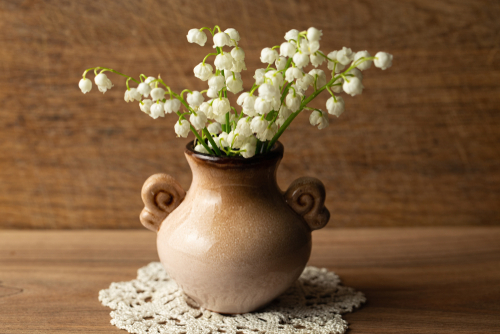
Once daffodils quit blooming, things can get ugly. Even so, it’s essential to the health of the plant to let the leaves yellow. Removing foliage prematurely may neaten things up, but come spring you’ll have far fewer flowers. And everyone knows that daffodils look best in large numbers.
THE ROLE OF DAFFODIL FOLIAGE
Few would dispute that daffodils are one of spring’s highlights. And with proper care, they multiply year after year. On the surface, they seem almost indestructible.
But don’t let that fool you. These bulbous plants are not maintenance free. In fact, their ability to grow and propagate depends largely on you.

It all stems from the foliage. Once the flowers fade, the plant can become an eyesore. As the leaves die off, they begin to turn yellow. And this can produce some unsightly clumps in the garden.
But tempting as it may be to cut them back, the dying leaves are performing a crucial task. They’re taking advantage of spring’s lengthening days to store up energy. And this in turn has a huge impact on the bulbs’ capacity to produce next year’s blooms.
WHY DAFFODIL FOLIAGE TURNS YELLOW
Indeed, the flowers may have stopped blooming, but the leaves still have work to do! Over the next six to eight weeks, they’ll slowly turn yellow. During that time, they’ll be absorbing sunlight which creates energy for the production of sugar. And sugar is what feeds the flowers for the following spring.

Sugar also replenishes the bulb after flowering, which can take a heavy toll on its reserves. Healthy bulbs store energy not only to withstand winter, but also to develop strong roots, shoots, leaves and flowers. Premature leaf cutting deprives them of this vital source of energy.
STRATEGIES FOR HIDING YELLOW LEAVES
Looking for ways to hide dying daffodil foliage? One strategy is to plant larger perennials with similar leaves in the vicinity. Good choices include daylilies, hostas and Siberian irises. As the daffodils decline, the other plants’ leaves grow up around them.
Having said that, avoid planting deep-rooted plants near daffodils. This can disturb the bulbs. Remember, daffodil bulbs are only about 6 inches below the soil surface.

Daylilies can hide yellowing daffodil foliage
Many people fold over dying leaves to mask their unsightliness. I’ll admit, I did this for years. However, some plant experts believe this can damage plant tissue while inhibiting the process of photosynthesis (less surface area to absorb light.) I will leave the decision up to you!
WHEN TO CUT BACK DAFFODIL FOLIAGE
Once the leaves turn entirely yellow, they are done for the season. You can remove them with shears. But if you wait for them to turn brown, you’ll only have to give a little tug.

A word of caution: At any other time, yellow leaves may indicate a problem such as fungal disease or basal rot. If this happens to your daffodils, check with your local nursery or online for how to treat.
For design ideas with daffodils (like above), check out my Instagram And be sure to click on the Spring Garden Highlight to take a walk through a woods filled with 5000 colorful varieties.




































